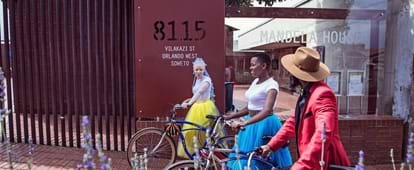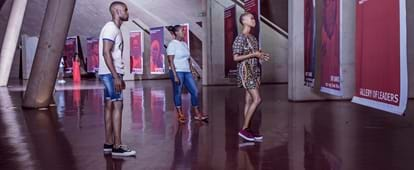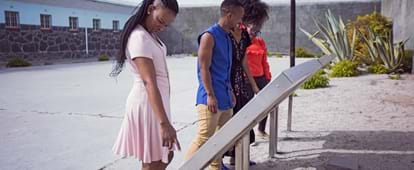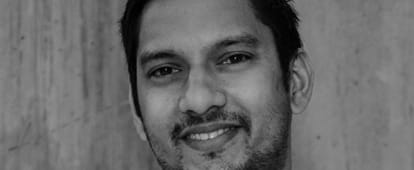By creating an account, I agree to the
Terms of service and Privacy policy
Choose your country and language:
Africa
Americas
Asia Pacific
Europe
SSouth Africa is made up of people who have been in the country since the beginning of time, as well as others who arrived either as slaves, escapees of persecution in their homelands, or seekers of instant riches.
The first major recorded migration was that of the Dutch, after Jan van Riebeeck landed in the Cape in 1652. The Dutch Cape Colony grew quickly as farmers settled to grow produce. Thereafter, other large migrations followed, with Malay slaves coming from Dutch-held Java, French Huguenots escaping persecution in France, German settlers in search of a better life in the Cape and Natal, British settlers eluding poverty in the UK in 1820, and Indian indentured labourers or slaves who were brought over by the British to work the sugarcane plantations in 1860.
In the lead-up to apartheid, numerous social and legal decisions made by British and Dutch colonial powers ensured the division between races. Throughout the 19th century, laws forced blacks, Indians, coloureds and KhoiSan to carry passes that restricted their movement. Laws were also passed to prevent them from voting and owning land.

IIn the early 20th century, Mohandas Gandhi fought for the basic human rights of Indians to be recognised and upheld. His efforts would later influence Nelson Mandela. Additionally, conflicts such as the Cape Frontier Wars between the British and Xhosa, the Anglo-Zulu wars and even the Anglo-Boer War further dissected the races.
By 1948, a political culture based on white supremacy was firmly in place. The pro-Afrikaner National Party came to power and implemented apartheid, which was more rigorous than previous segregationist policies, and encouraged state repression of blacks, coloureds and Indians.
In 1950, the Group Areas Act of 1950 was passed, which segregated each race into specific urban living areas. Non-white residents in multiracial areas such as District Six and Sophiatown were relocated against their will to demarcated townships. By 1982, 3.5 million people were forcefully removed.
Another major event of the 1950s was the Congress of the People, which took place shortly after the launch of the Defiance Campaign. On 26 June, 1955, some 3 000 people gathered in Kliptown, Soweto, to sign the Freedom Charter, which is the foundation of modern-day South Africa’s Constitution. Shortly thereafter, demonstrations against pass laws came in the form of the Women’s March in 1956, and the Sharpeville Massacre of 1960, during which the latter whereby police killed 69 protestors.

OOn 11 July, 1963, security police raided Liliesleaf Farm in Rivonia and arrested 19 ANC members for sabotage. This led to the Rivonia Trial and subsequent imprisonment of Nelson Mandela, Walter Sisulu, Govan Mbeki and others. In the same year, freedom fighter Dennis Brutus helped establish the South African Non-Racial Olympic Committee and was then arrested and imprisoned on Robben Island. While he was incarcerated, South Africa was suspended from the 1964 Tokyo Olympics, which was followed by an international sports boycott.
After these events, the struggle quietened down for a few years until, in 1969, a student by the name of Steve Biko entered the political fray. While Mandela and fellow struggle stalwarts were imprisoned, Biko fought the regime with his Black Consciousness Movement. He had the insight to realise that the black majority also played a part in their being oppressed. “The most potent weapon in the hands of the oppressor is the mind of the oppressed,” he said, meaning the black population’s belief that they were inferior to whites kept them repressed.
The movement sought to change that mindset.
Black Consciousness quickly gained momentum and was highly influential. Government considered Biko a threat and banned him in 1973. This prevented Biko from leaving King William’s Town. In September 1977, Biko was arrested and brutally killed while in police custody in Port Elizabeth. His death, as well as the 1976 Soweto uprising that saw police kill hundreds of schoolchildren, marked a turning point in the struggle. South Africans intensified their fight against the regime.

BBiko lives on in the Black Consciousness ideas that exist today. Many South Africans, including rapper ProVerb, believe it is more relevant today than ever before. “Modern black South Africans have grown conscious of their roots and further embrace the reality and beauty in being black,” he said.
With paramilitary attacks against the regime coming from Umkhonto we Sizwe and Azanian People's Liberation Army, as well as international sanctions against South Africa, the apartheid government was under pressure to give up their hold on the country. That day came when President FW de Klerk set Mandela free. The man who was the face of the liberation struggle walked out of Victor Verster Prison on 11 February, 1990, after 27 years behind bars. Mandela was then voted as president in South Africa’s first democratic election on 27 April, 1994. This was soon followed by the establishment of our world-renowned Constitution and the Truth and Reconciliation Commission.
It is ironic in a country considered the Cradle of Humankind, man would find ways of dividing itself based on that most paltry measure: skin colour. Apartheid still stings many South Africans to this day. The hurt was evident in 2007, when Dennis Brutus was nominated for induction into the South African Sports Hall of Fame. Ever the activist, Brutus declined, saying: “It is incompatible to have those who championed racist sport alongside its genuine victims.”

AAbout the author
Shamin Chibba has 13 years of writing experience, including three years as an editor. He has written in numerous formats, from long-form features for Al Jazeera Magazine and Brand South Africa.com to adaptations of classic tales for graphic novels. He also founded Seer Media, which provided news and information for NGOs in the Eastern Cape. When not writing, he can be found squirming painfully while trying to perfect his kung fu horse-stance. You can find his portfolio at Edge of Mystery
Related articles

